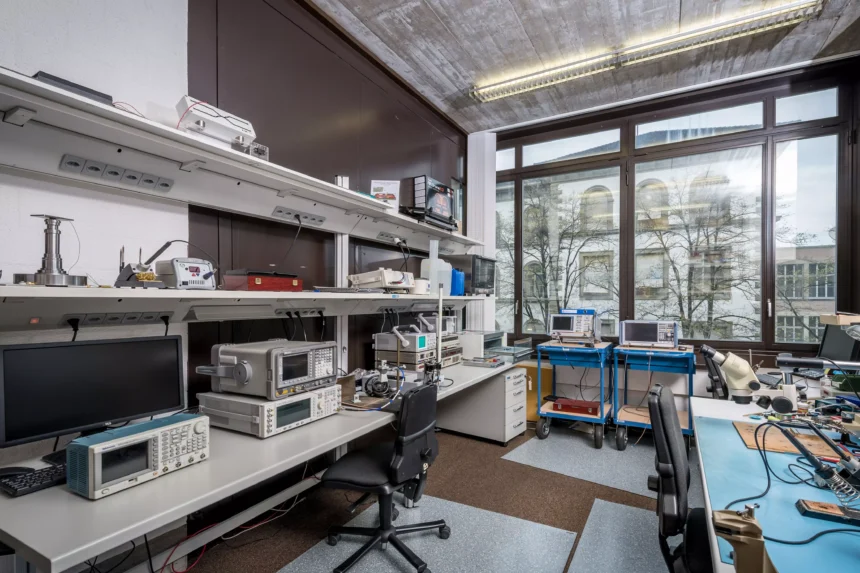Are you ready to take your networking skills to the next level and achieve CCIE certification? One crucial aspect of preparing for the CCIE Enterprise Infrastructure exam is understanding the topology of the lab. In this blog post, we will delve into the importance of topology in find CCIE Enterprise Infrastructure out here, explore the components and devices involved, discuss how to design an effective topology, address common challenges faced by candidates, and provide tips on overcoming them. So, grab your thinking cap as we unravel the intricacies of CCIE Enterprise Infrastructure lab topology!
Understanding CCIE Enterprise Infrastructure Lab
The CCIE Enterprise Infrastructure lab is a crucial component of the certification exam, testing candidates on real-world scenarios and network configurations. Understanding the topology of the lab is essential for success, as it simulates complex enterprise networks that professionals encounter in their careers.
Candidates must be well-versed in various networking technologies, protocols, and configurations to navigate through the tasks efficiently. The lab environment challenges individuals to showcase their problem-solving skills, troubleshooting abilities, and overall comprehension of enterprise-level network infrastructure.
By immersing themselves in hands-on practice with different devices and setups commonly found in enterprise networks, candidates can gain valuable experience and confidence before sitting for the CCIE exam. Mastering the intricacies of the lab topology is key to demonstrating proficiency in designing, implementing, managing, and troubleshooting enterprise networks effectively.
The Importance of Topology in the CCIE Exam
When it comes to the CCIE exam, understanding topology is key. The layout of your network design can make or break your success in the exam.
Having a solid grasp of how different components connect and interact with each other is crucial for troubleshooting scenarios you may encounter during the lab portion of the test.
By comprehending topology, you demonstrate your ability to plan and implement complex network infrastructures effectively. This skill is highly valued in real-world networking environments as well.
In the CCIE Enterprise Infrastructure Lab, candidates are expected to showcase their expertise in designing scalable solutions that meet specific requirements. Topology plays a significant role in demonstrating this proficiency.
Mastering topology not only helps you navigate through various tasks seamlessly but also showcases your competency as a proficient network engineer ready to tackle any challenges thrown your way.
Components and Devices involved in the CCIE Lab
In the CCIE Enterprise Infrastructure Lab, there is a wide array of components and devices that play crucial roles in creating a complex network environment. Routers are essential for routing data packets between networks, switches facilitate communication within local networks, and firewalls ensure network security by monitoring and controlling incoming/outgoing traffic.
Moreover, servers are used to store data and host applications, while various types of access points enable wireless connectivity. Virtual machines allow candidates to simulate different operating systems or software configurations. Additionally, load balancers distribute network traffic efficiently across multiple servers to optimize performance.
Each device has its specific function but works together harmoniously to replicate real-world networking scenarios for CCIE candidates. Understanding the role of each component is key to successfully configuring and troubleshooting intricate network setups during the exam.
Designing a Topology for the CCIE Enterprise Infrastructure Lab
When it comes to designing a topology for the CCIE Enterprise Infrastructure Lab, meticulous planning is key. You need to consider the various components and devices involved in the lab setup to ensure a smooth testing environment. Start by outlining your network requirements and identifying the necessary routing protocols, VLANs, and IP addressing schemes.
Next, determine the placement of routers, switches, firewalls, servers, and other networking equipment within your topology. Pay close attention to connectivity between devices and implement redundancy where needed. Remember that scalability is essential in enterprise networks, so plan for future growth when designing your topology.
Utilize tools like network simulation software or physical lab equipment to test and validate your design before the actual exam day. By taking the time to carefully craft your CCIE lab topology, you’ll be better prepared to tackle any challenges that may arise during the exam.
Common Challenges and How to Overcome Them
Navigating the CCIE Enterprise Infrastructure Lab can present its fair share of challenges. One common hurdle is ensuring all devices are properly configured and interconnected, as a single misconfiguration can disrupt the entire topology. Troubleshooting network issues efficiently under time constraints is another obstacle candidates often face.
To overcome these challenges, thorough preparation is key. Familiarize yourself with various troubleshooting techniques and practice implementing them in simulated lab scenarios. Additionally, creating detailed documentation of your configurations can help you quickly identify and rectify any errors that may arise during the exam.
Staying calm under pressure and managing your time effectively are also essential skills to master. Develop a strategic approach to tackling each task within the allotted timeframe, prioritizing critical tasks while keeping an eye on the big picture. With perseverance and diligent practice, you can conquer these challenges and excel in the CCIE Enterprise Infrastructure Lab.#
Conclusion
Understanding the topology of the CCIE Enterprise Infrastructure Lab is crucial for success in the exam. By familiarizing yourself with the components and devices involved, designing a robust topology, and being prepared to overcome common challenges, you can increase your chances of passing the CCIE exam with flying colors. Remember that practice makes perfect, so make sure to dedicate ample time to hands-on lab work and simulations. With diligence and determination, you can conquer the CCIE Enterprise Infrastructure Lab and take a significant step forward in your networking career. Find out more about CCIE lab useful site – discover CCIE Enterprise Infrastructure here!






